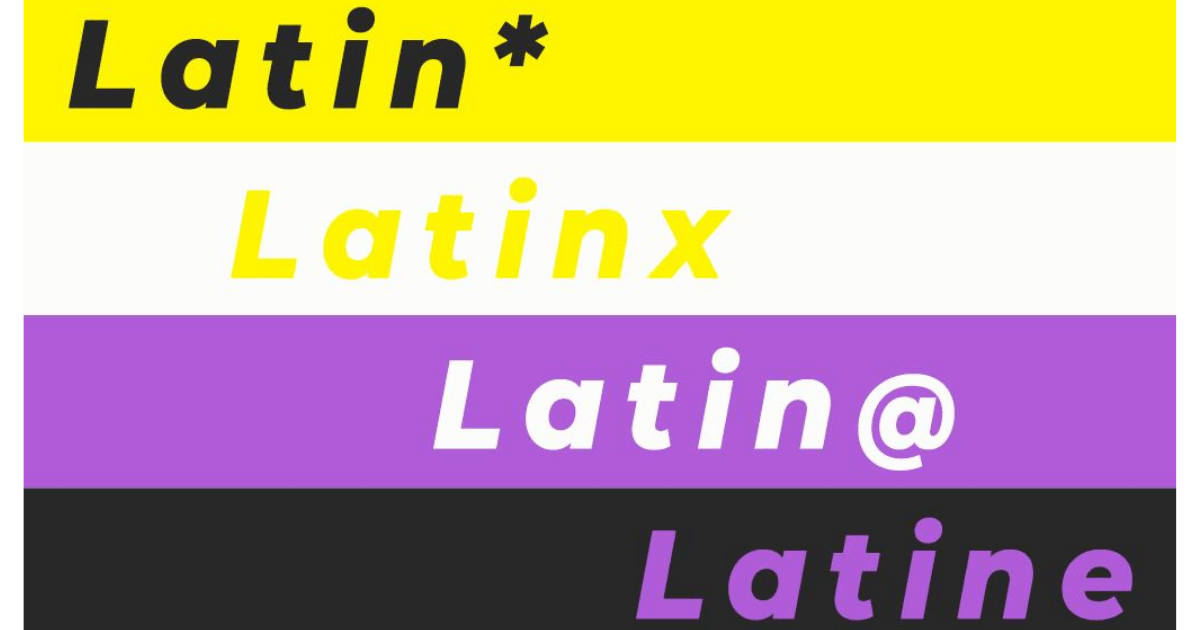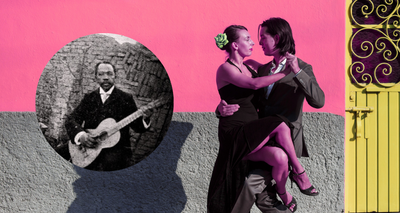Have you ever wondered how gender-neutral word ‘Latinx’ is pronounced? If you want the quick answer, here it is: Latine. Yes, that x can be pronounced like an e. But then, why use an x? Now, you’ll have to stay for the full answer.
What is nonbinary Spanish?
Just as in English the “they”, “ze” and other neutral pronouns are being used to refer to nonbinary people or to avoid assuming people’s gender, in Spanish there is “lenguaje no binario” or “lenguaje inclusivo”.
If you speak Spanish, you must have realized by now that it is a heavily gendered language. While in English the issue is pretty much solved with the use of “they” and avoiding gendered words such as “fireman” or “hostess”, nonbinary Spanish is a little more complex.
Spanish has gendered pronouns, articles, participles and adjectives that, until recently, only took into account feminine and masculine genders. Additionally, there is something called “generic masculine”: a single man in a crowd of women can turn the whole group into a masculine subject. That is, the binary nature of traditional Spanish not only ignores nonbinary people, but also women.
Nonbinary association No Binarie Costa Rica put us in touch with 21-year-old Emmeril Morales Obando, who explains: “Although some nonbinary people feel comfortable with binary pronouns, it is not the case of all; in my case, for example, I only use neutral pronoun elle.”
Elle is a neutral variation of él (he) and ella (she).
Él es Alex / Ella es Alex → Elle es Alex [Ze is Alex]
When it comes to articles, nonbinary Spanish changes el and la with le; and un and una with une. Gendered adjectives and pronouns change the final o or a for an e.
El alumno es colombiano / La alumna es colombiana → Le alumne es colombiane [The student is Colombian]
Todos estamos cansados / Todas estamos cansadas → Todes estamos cansades [We are all tired]
Letter x, @ and other symbols have also been used to replace gender marks, but the problem is that they are hard or impossible to read and, more importantly, they are not accessible to everyone. According to Morales Obando, these alternatives are “ableist” (they discriminate people with disabilities), such as the case of blind people who use text-to-voice apps.
And that is why Latinx is pronounced —and should be written— Latine.
Backlash
If you are aware of the resistance to the use of gender-neutral pronouns in English, then you can imagine the backlash nonbinary Spanish is getting. Morales Obando says: “Some people are against this language because it sounds strange or silly to them […] but it is necessary to some of us, and I find the fact that others put the ‘feelings of the language’ over feelings of people extremely apathetic.”
Nonbinary association Neutres Chile, who decide to answer collectively to our questions, explain: “There is an aggressive, negative or burlesque response from private and public environments to neutral language, and that is because people find it strange; they find it quite alien to their binary realities”.
View this post on Instagram
View this post on Instagram
The Royal Spanish Academy (the RAE) is probably the biggest stronghold against nonbinary language. On January this year, they published a report on inclusive Spanish, in which curiously there is not a single mention of the existence of nonbinary people. Instead, this 155-page document is completely dedicated to argue against the idea that generic masculine is “a patriarchal heritage.”
One of the recurring pleas against the use the “so called inclusive language”, as they call it, is that “To address a mix group, the usual is to recur to the masculine, unmarked gender that englobes men and women in its reference. The @ is not a lingüistic sign; the use of «x» as an appearing inclusive morpheme generates illegible sequences”.
On that last thing we can agree. The most inclusive (and easy to pronounce) alternative for nonbinary Spanish, then, would be the use of letter e.
But in this long, verbose report, the RAE does not address the use of letter e but in two quoted tweets (yes, they quote their own tweets) that assert that to use the e to avoid gender marks is “to artificially create a presumed morpheme of inclusive gender” and that “it is foreign to the morphology of Spanish, as well as unnecessary, since grammatical masculine already complies with that function as unmarked term for the gender opposition.”
Another institution dedicated to “promoting the good use of the Spanish”, Fundéu, has a slightly more modern approach (descriptive, more than prescriptive), but still guided by the RAE, as they explicitly state. They host a complete micro-site dedicated to inclusive Spanish, where they claim to provide “a brief guide on everything that’s going on” on this respect. Nonetheless, they have dedicated this space to invalidate nonbinary alternatives and encourage the use of old-fashion generic masculine, arguing that it is more “economic” and “a majority phenomenon.”
Regarding the use of the x, @ and e, they say that “They can be admissible in certain contexts as a creative and provocative verbal manifestation, as a graphic resource more typical of banners and slogans, in which it can be visually expressive, but it is recommended not to use it in general texts.” This argument downgrades the identity of nonbinary people to a mere place of “creativity” or “provocation”. We do not have a place in the “general” world.
Help Power Up Our Work. Sign up for our ‘BoldLatina News’ or Invest In Our Future Become A ‘BoldLatina Collective’ Member
Emmeril Morales Obando has something to say about this: “When some institution calls [nonbinary Spanish] informal, I feel it invalidating, as if they are saying that my needs are informal, that my way of speaking is informal, that my mere existence is informal”. In Neutres Chile, they simply call it “systemic violence.”
Why is it important?
Not including nonbinary identities in our speech is denying their existence. As Neutres Chile explain: “What is not named does not exist; the main reason behind the existence of neutral language is to make visible all those people whose identities are not found in the man/woman binary.”
Visibility and acknowledgment can have a strong impact on the life quality and mental health of nonbinary people. According to the 2020 Survey on LGBTQ mental health by the Trevor Project, “Transgender and nonbinary youth who reported having pronouns respected by all or most people in their lives attempted suicide at half the rate of those who did not have their pronouns respected.” This report also found that less than one in ten nonbinary youth in the US have their pronouns respected by all or most of the people in their lives.
Trans nonbinary Pattricio Valentino Giuri, 24-year-old member of Asamblea No Binarie Buenos Aires, know how it feels: “It is very hard to survive in a binary world […] People almost never respect my self-perceived pronoun. They tell me that it means change, and that change takes time”.
This is a common argument against nonbinary language: that while its intentions are noble, it is impossible to unnaturally force such a big change. The question is if this change is really so unnatural, bearing in mind that it was born simultaneously in many different languages: we find gender-neutral pronouns in English, lenguaje no binario in Spanish, langage épicène in French, gender-neutral pronoun hen in Swedish, gender-neutral German, dual Arabic and gender-neutral endings in Hebrew.
Weather conservative people and institutions like it or not, inclusive Spanish is finding its way into everyday life, art, literature, academia and politics —Argentina’s president, father of nonbinary drag queen Dyhzy, has used in more than one occasion the term argentines to refer to Argentinians.
View this post on Instagram
Se rompe ese dejar de discriminar? Feliz orgullo a todxs ????????️????????
Some institutions are aware of this. Last September, Merriam-Webster’s dictionary added a new definition of the pronoun “they”, as a way to refer to nonbinary individuals. In the meantime, Spanish institutions keep fighting back. As Morales Obando puts it: “The language evolves according to the needs of society, it has always been like that, not the other way around.Note: Direct testimonies and quotes have been translated from Spanish into English by the author.






